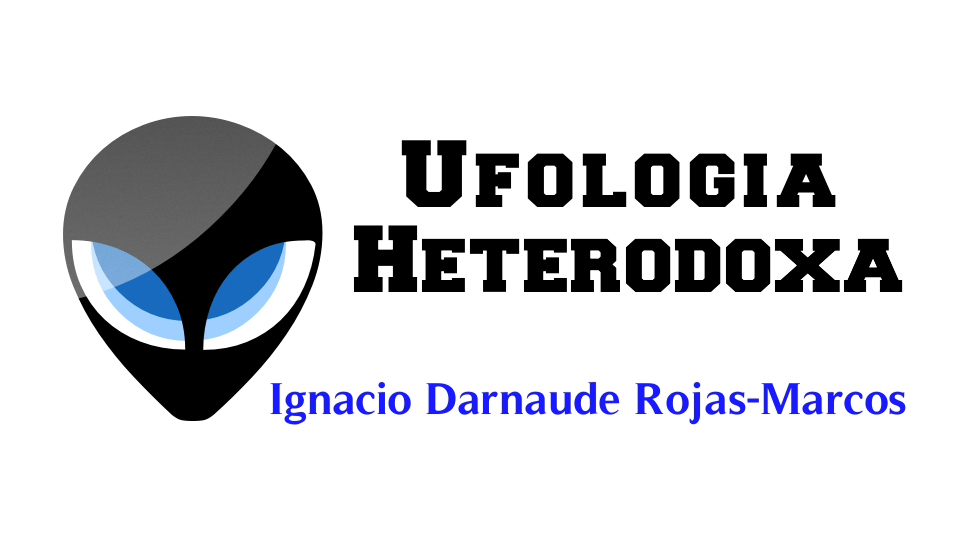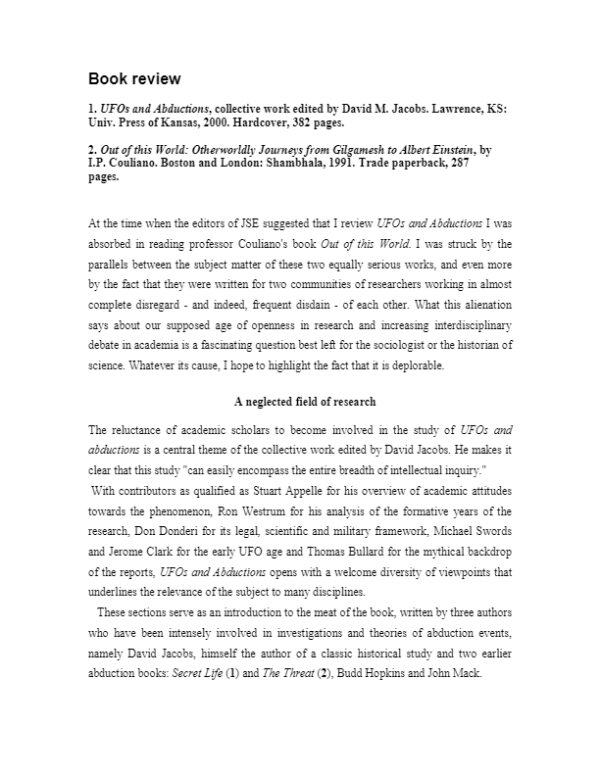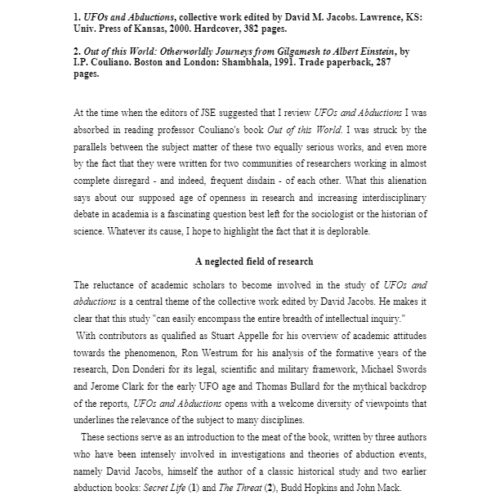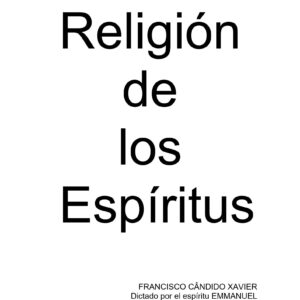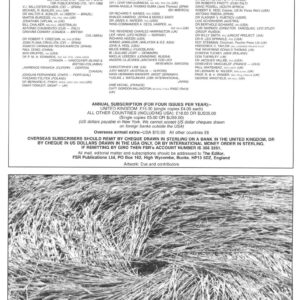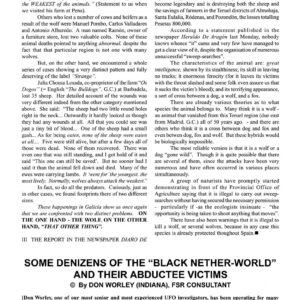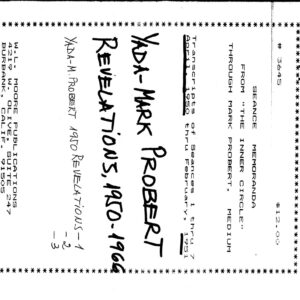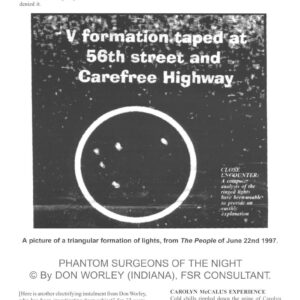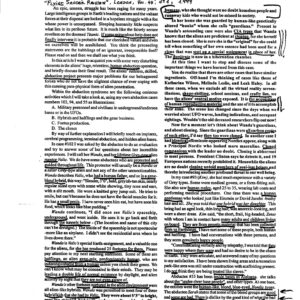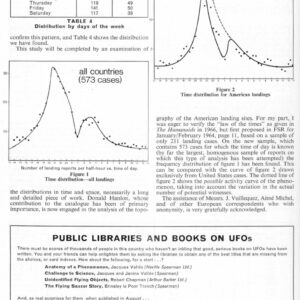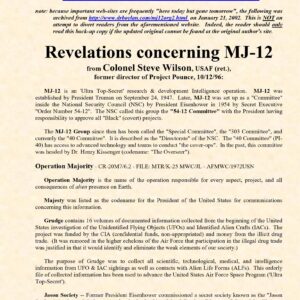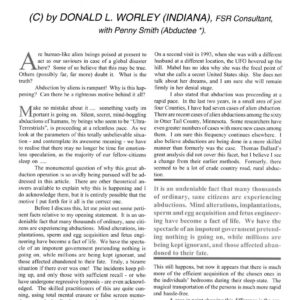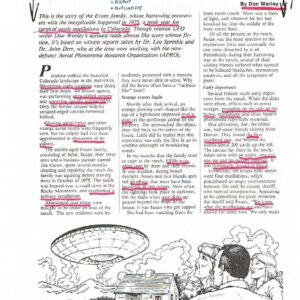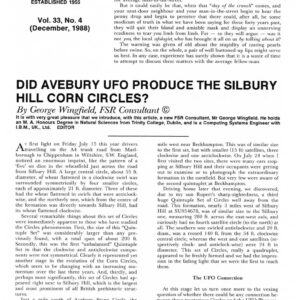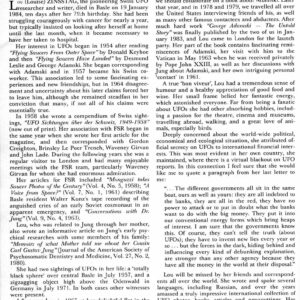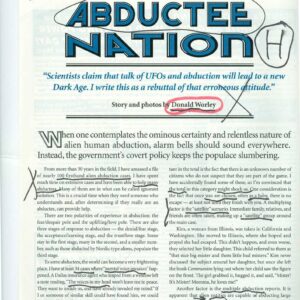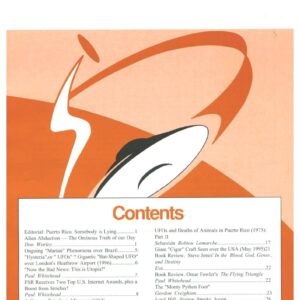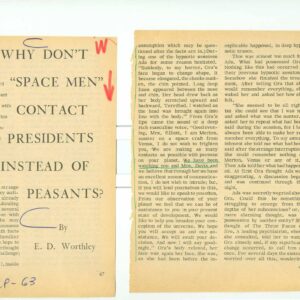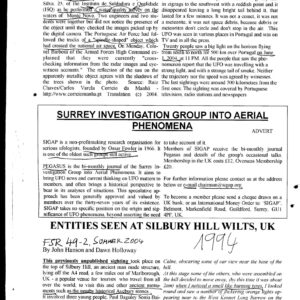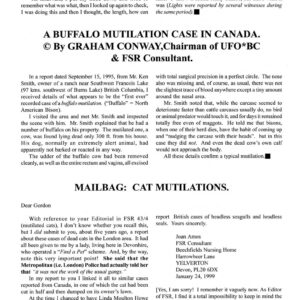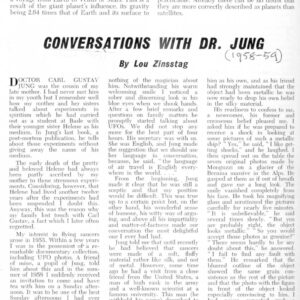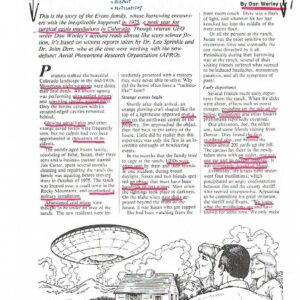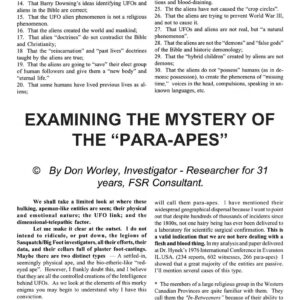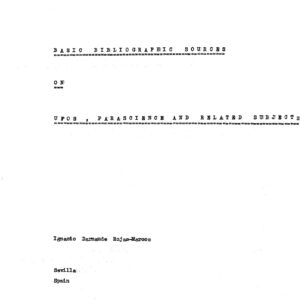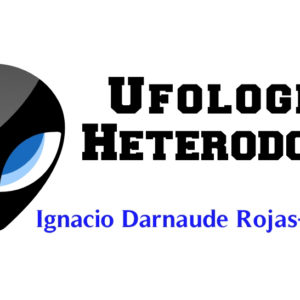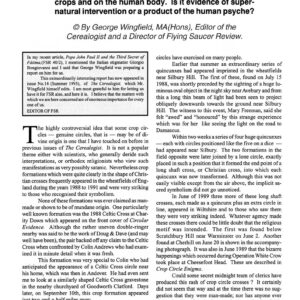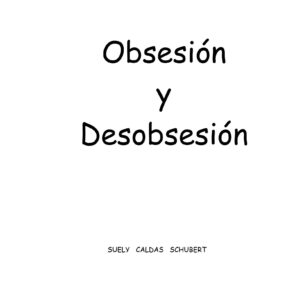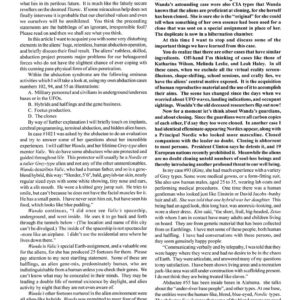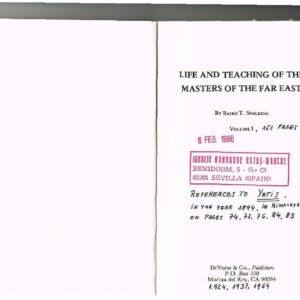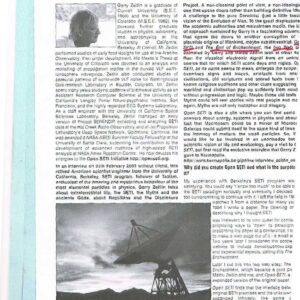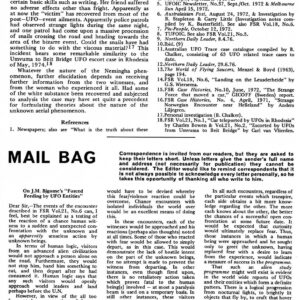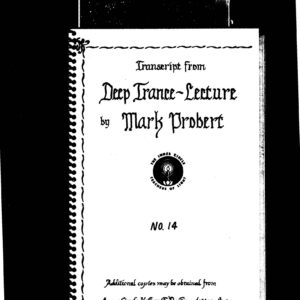Abductions and UFOs
- Descripción
Descripción
Abductions and UFOs
Abductions and UFOs
Book review
1. UFOs and Abductions, collective work edited by David M. Jacobs. Lawrence, KS:
Univ. Press of Kansas, 2000. Hardcover, 382 pages.
2. Out of this World: Otherworldly Journeys from Gilgamesh to Albert Einstein, by
I.P. Couliano. Boston and London: Shambhala, 1991. Trade paperback, 287
pages.
At the time when the editors of JSE suggested that I review UFOs and Abductions I was
absorbed in reading professor Couliano’s book Out of this World. I was struck by the
parallels between the subject matter of these two equally serious works, and even more
by the fact that they were written for two communities of researchers working in almost
complete disregard – and indeed, frequent disdain – of each other. What this alienation
says about our supposed age of openness in research and increasing interdisciplinary
debate in academia is a fascinating question best left for the sociologist or the historian of
science. Whatever its cause, I hope to highlight the fact that it is deplorable.
A neglected field of research
The reluctance of academic scholars to become involved in the study of UFOs and
abductions is a central theme of the collective work edited by David Jacobs. He makes it
clear that this study «can easily encompass the entire breadth of intellectual inquiry.»
With contributors as qualified as Stuart Appelle for his overview of academic attitudes
towards the phenomenon, Ron Westrum for his analysis of the formative years of the
research, Don Donderi for its legal, scientific and military framework, Michael Swords
and Jerome Clark for the early UFO age and Thomas Bullard for the mythical backdrop
of the reports, UFOs and Abductions opens with a welcome diversity of viewpoints that
underlines the relevance of the subject to many disciplines.
These sections serve as an introduction to the meat of the book, written by three authors
who have been intensely involved in investigations and theories of abduction events,
namely David Jacobs, himself the author of a classic historical study and two earlier
abduction books: Secret Life (1) and The Threat (2), Budd Hopkins and John Mack.
Following their contributions, Michael Persinger offers a contrasting statement from the
point of view of neurological research. David Jacobs closes with suggestions for future
research that bring the reader back to his central theme, emphasizing ‘the existence of a
potentially important phenomenon» while recognizing that «the present volume displays
some of the deep divisions in UFO and abduction research.» Although the knowledgeable
ufologist is unlikely to find anything really new in this compilation (the contributors are
widely published and are not reporting here on any novel research) its strength lies in the
fact that, as a summary of the extant literature, it highlights mysteries that are indeed
begging for scientific scrutiny.
Two problems, many viewpoints
In his introduction Jacobs proposes a statement of the dual problems of contemporary
UFO research: (i) All the work done by ufologists over the last 50 years «has not solved
the problem of building bridges between them and the scientific community» and (ii) the
key issue is to decide whether people «are accurately recalling real events, or are they
generating psychologically-based accounts?»
Stuart Appelle begins the book with a good historical summary that will be especially
useful for the curious reader who is new to the field. It is weak in at least two places,
however: It repeats the history of the Robertson panel – that turning point in official
attitudes towards UFO reports – in terms that have become standard in statements about
the phenomenon but fail to alert us about more recently-discovered documents, such as
the long-secret Battelle memorandum that was unearthed in 1992 (3). This document
recommended in the strongest terms that the eminent panel not be given access to all the
data in the possession of the CIA and the Air Force. It also hinted at the existence of a
covert project, quite separate from Blue Book and the Robertson panel, whose extent is
now being analyzed by a few historical researchers. This section also fails to note the
progress made in physical analyses of UFO events over the last ten years or so, as
evidenced by presentations at the Pocantico symposium, the French Gepan project and
other places (4).
Ron Westrum’s chapter, entitled «Limited Access» offers the observation that «science
in the making is dynamic»: in changing times it can be anything but dispassionate and
objective. To illustrate this point he reviews the contributions and motivations of six
natural scientists whose work influenced early research directions in the field, namely
Donald Menzel, Carl Sagan, James McDonald, J. Allen Hynek, the present reviewer and
Edward Condon. The parallels are as striking as the differences, and certainly prove
Westrum’s point that «there are many barriers to the conduct of this research.» He astutely
notes in passing that «Menzel’s level of commitment to this subject is curious and remains
unexplained.»
As the sole survivor from the group selected by Westrum I may be forgiven for
questioning his reference to me as a «theorist», a term that fails to reflect the extensive
field research I have conducted (5). Even in the early years I had met with Blue Book
witnesses as an associate of Hynek and had spent two days in New Hampshire with Betty
and Barney Hill. My book Confrontations highlights 47 first-hand cases of close
encounters and abductions among 100 selected field investigations on three continents.
More generally, the book gives the misleading impression that most independent
researchers, like the «six natural scientists» studied by Westrum, somehow vanished from
the field some 20 years ago, and that this vacuum was filled by abduction specialists who
did all the subsequent work. It is to be hoped that Westrum’s important contribution will
be expanded into a wider study of scientists who have participated in shaping our ideas
about the phenomenon, including such prominent researchers as Sturrock or Haines in the
United States and Poher in Europe, all of whom are still alive and could testify about
their experiences in the academic and scientific milieu.
The nature of evidence
Don Donderi continues the compilation with a statement of the UFO problem in terms of
science, law and the military, stressing the question of what constitutes «evidence.» He
illustrates the point brilliantly by staging an imaginary trial in which the believer and the
skeptic take opposite sides. Donderi poses another key question, «how would military
intelligence deal with the UFO-related information?» Yet when he discusses the history
of the field he too over-simplifies the actual role of military intelligence in shaping the
Robertson panel. He cites standard sources like Ruppelt and Condon but remains silent
(like other contributors in this volume) about the secret role played by Battelle and by the
early developers of the science of mind control and psychological warfare. The same
remark could be made about Swords’ chapter on «UFOs, the military and the early Cold
War era.» His description of the inner workings of the Pentagon as it tried to come to
grips with reports from citizens and from its own personnel is as fascinating in its human
aspects as it is chilling in its implications for decision-making at the highest level.
Swords is the only contributor who brings up the topic of psychological warfare, but
again he stops short rather than delving into its implications. One would have wished to
know more about the use of the abduction theme in the manipulation of individuals by
the military, such as was evident in the case of physicist Paul Bennewitz. In an effort to
take his attention away from a classified project, agents of the Air Force led him to
believe that the strange lights he was tracking over Kirtland Air Force Base were
involved in alien encounters. Was that an isolated incident?
Jerome Clark covers some of the same historical ground in his chapter on «the Extraterrestrial
Hypothesis in the Early UFO Age», retracing the steps of Kenneth Arnold and
the early Contactees up to the time when Donald Keyhoe, of Nicap fame, channelled the
public debate into scientific and policy-based arguments in the fifties. These are all useful
summaries of documented facts, but it is clear that the complete story has not yet been
told and that much is left for a new generation of UFO historians to uncover.
At this stage in the book the reader may be forgiven for feeling a bit weary of hearing
about the history of the field, which has now been covered in five different ways by five
contributors, all of whom make reference to the intricacies of project Blue Book, the
Robertson panel, the Kenneth Arnold sighting and the Condon study. The chapter by
Thomas Bullard, entitled «UFOs: Lost in the Myths» therefore comes as welcome relief.
Bullard wonders why students of religion shy away from a subject that ought to attract
them in droves. He gives an excellent definition of «myth» and goes on to explore
parallels between UFO reports and shamanistic traditions, witchcraft and fairyland
abductions. Recounting the Native American story of Handsome Lake’s sky journey and
his tour of heaven and hell around 1800, he observes that the tale «borrows from Seneca
religion and Christian influences, but the parallel with abduction accounts are plain.»
Bullard brings the subject up-to-date with an analysis of the Heaven’s Gate collective
suicide, in which the believers thought «their spirits could ascend to a UFO traveling in
the wake of the Hale-Bopp comet». At this point the irresponsible attitude of some
notable ufologists who rushed before the media to capitalize on the alleged mystery of
Hale-Bopp and the supposed cover-up of the elusive spacecraft by Nasa (a spacecraft that
turned out to be nothing more than an optical artefact in the telescope of an amateur
astronomer), could have been exposed. And the fact that the death of the followers of
Marshall Applewhite had been forecast as early as 1975 could have been quoted, if only
to serve as a demonstration that such cultist movements are amenable to rational analysis,
and that potential victims can be alerted against them. Whatever the stimulus, however,
the followers of Heaven’s Gate stand as a reminder of the powerful spiritual context of
the phenomenon. (6)
Abductions research revisited
Chapter Seven, entitled «The UFO Abduction Controversy in the United States»
introduces the central topic of the book, which will represent its main attraction to readers.
In this chapter Jacobs defines the debate between the «Realists» who argue that «beings
from somewhere else are coming to the Earth to fulfill an unknown agenda of which the
abduction of humans is central» and the «Positives» who demand nothing less than a
revision of the concept of reality. Jacobs places himself in the former group, further
defining his view of the phenomenon as «a complex and systematic program of the
production of hybrids for an eventual integration into human society.» In the second
group he places John Mack and others who think that abductions are «harbingers of the
onset of positively transformational aliens» who had the best interests of humanity at
heart, (page 206)
This clear statement of the present debate constitutes the hinge of this book. Once the
problem is posed in this fashion, there is an added attack by Jacobs on the Positive
scenario as «based on unproven metaphysical assumptions and incompetent hypnosis.»
Hopkins follows with a chapter entitled «Hypnosis and Abduction accounts» in which
the entire history of the field is, once again, retold, including the Hill case, the
contribution of Nicap, and several classic cases. John Mack contributes a chapter called
«How the Alien Abduction Phenomenon challenges the boundaries of our Reality». Mack
is the only contributor who brings in the experience of parapsychological research and
physical theories of nonlocality to supports his arguments. He also recognizes that the
witnesses who volunteer their stories to abduction researchers represent a self-selected
population, an observation that must have significant consequences for the subsequent
interpretation of their stories, whether or not hypnosis is used.
Reality and the Brain
The last chapter of the book is written by Persinger, who refreshingly restates the obvious:
«All of your experiences are generated within your brain. They emerge from complex,
subtle EM patterns created within the intricate, minute interactions that represent your
cerebral state.» As a consequence, «Any (underlined in the text) stimulus that can induce
specific patterns of activity within groups of brain cells can generate experiences that are
equally as real and as compelling» as actual events. Persinger goes on to argue that this
process offers a natural explanation for the reported effects.
True enough in the laboratory and in very specific conditions, but how can this
observation be extended to outdoor, open-field situations? The present reviewer is
currently investigating a case involving six male witnesses in four groups, all of whom
describe a low-flying object of extraordinary appearance. One of these men suspects that
he was abducted during the time when the object overflew his car. I have repeatedly
scanned the site and the vicinity for abnormal electromagnetic effects, to no avail. Even if
the main witness suffered a personal episode such as described by Persinger, what
happened to the others? One man was a mile away, another three miles away from the
scene. Yet all describe the object in the same terms. This is the challenge that faces us as
researchers, whether we describe ourselves as Positive, Realists, or prefer, as I do, to
remain independent of either denomination. Persinger’s theory is an important avenue to
deepen our understanding of the phenomena, but it has yet to be tested in the field.
What was left unsaid
The reader who is unacquainted with the literature will find UFOs and Abductions to be
educational and intellectually stimulating. David Jacobs and his co-editors must be
congratulated for a superb job of production, with extensive coverage of notes, a bibliography
and the indispensable index. (One disappointment is the presentation of selected books, which the
publisher ran together in such condensed form as to be almost unreadable, perhaps to save on the
number of pages? It contains some notable errors, such as misquoting my own Forbidden Science
as «Forbidden Knowledge!»)
To the more experienced reader, a number of problems do arise with the work.
First, one wonders why abductions should stop at the borders of the United States, which only
cover less than 5 of the Earth’s landmass. While similar reports have been made in Great Britain,
South America and other parts of the world, they do not seem to have aroused as much fervor as
in the United States. The cultural aspects of differing attitudes towards the problem could have
been touched on.
Next is the problem of glaring omissions that could hardly be anything but deliberate.
For example the Journal of Scientific Exploration is not even cited in the index, although SSE
has long provided that rare commodity, a neutral venue for discussion of UFO phenomena.
Notwithstanding the useful role of the Journal of UFO Studies, JSE is arguably the only peerreviewed
journal encompassing both ufology and parapsychology, and has published relevant
articles about abductions. Some of these articles stood in sharp contrast to those cited in the book,
which could have made for interesting debate.
Not only is JSE ignored, but the authors of UFOs & Abductions are silent on basic findings of
parapsychology, which they could have found directly relevant to their investigative work. In
that respect it is striking that no one has cited Joost Meerloo’s classic works on the
communication theory of telepathy (7). Meerloo had presented a defmitive exploration of «the
non-verbal conversation and communication between the unconscious minds of therapist and
patient» with observations that seem critical to the methodology of abduction interviews, whether
or not they use hypnosis.
Equally disturbing is the fact that the seminal work of Dr. David Gotlib, who founded the
Bulletin of Anomalous Experience and edited it from 1990 to 1994, has been ignored. Dr. Gotlib
is a professional psychotherapist specializing in the treatment of anxiety and depressive disorders.
He began working with abductees in the mid-eighties. The Bulletin, which includes articles and
letters from most of the contributors to UFOs & Abductions, who could hardly be unaware of
its role in their community. It has presented the most unbiased framework for a healthy
debate about abductions but was frequently at variance with the «leaders» of the field.
More generally, contributions to abduction research made by those who refuse to join
either the «Realist» or the «Positive» school, or those who are neither in Jacobs’ camp or
in Mack’s camp (like the present reviewer) are simply treated as irrelevant. Many
important contributors to our knowledge of abductions thus fall victim to a subtle form of
censorship. They include Dennis Stillings, whose work on the cyberbiology of the
experience is central to the issue (8), and Keith Thompson whose book on UFOs and the
Mythic Imagination would have deserved at least a passing reference. John Mack himself
once hailed Thompson’s work for its «courageous attack on the boundaries between the
material and the psychological, the mythic and the real.» (9)
Even when certain authors are quoted, it is only for some favorable comment about the
contributors to the book. Thus French journalist Marie-Thérèse de Brosses is cited (page
239) for being impressed with Hopkins’ technique, but her skepticism towards other
aspects of abduction research is not mentioned. In her well-researched book (10) de
Brosses had some sharp things to say about the negative impact of the hypnosis process
on the lives of abductees she interviewed, yet those comments are ignored. One witness,
for instance, had recurring experiences of traveling with a being of light she assumed was
an angel. Following hypnosis sessions with Jacobs she was told the being actually was an
alien intent on harming her, and her experiences became intensely traumatic. It is in these
missing citations and omissions that we may fmd a partial explanation for the reluctance
of the academic community at large to enter into a field of research so obviously riddled
with selection effects and so slow to acknowledge its previous errors and learn from them.
What happened to all the evidence?
Ten years ago the situation seemed very different indeed, and the same writers were
making statements that were far more positive about the imminence of a breakthrough. In
his introduction to Ed and Frances Walters’ book The Gulf Breeze Sightings, for instance,
Budd Hopkins described their experience as «hard, unavoidable fact.» Commenting on
the case of the woman he refers to as Kathie Davis in Intruders, Hopkins stated that the
affair «has yielded more new information – unsettling information, it must be said – about
the nature and purpose of the UFO phenomenon than any case yet investigated.» (11). In
his foreword to Jacobs’ Secret Life, John Mack wrote that «surveys suggest that hundreds
of thousands and possibly more than a million persons in the US alone may be
abductees.» Following Hopkins’ investigation of the Linda Cortile affair in New York
City it was even reported that UN General Secretary Perez de Cuellar had been abducted
and that this «Case of the Century» would soon force recognition of the reality of the
phenomenon once and for all.
Faced with such strong assertions the impartial scientist reading the literature today
may be justified to ask, What happened to all that evidence? The Gulf Breeze sightings
and the Case of the Century are rarely mentioned anymore as evidence by ufo legists. As
for survey responses indicative of abduction, they have actually decreased among the
American population. Why has this community made no visible progress if the solution
appeared to be so close at hand ten years ago? And if errors of analysis have been made,
what lessons are we drawing from them?
Writing in Secret Life, Jacobs himself had stated: «We have been invaded. It is not an
occupation, but it is an invasion. At present we can do little or nothing to stop it.» (p.316)
and he had posed what he called «the central question of abduction research» in simple,
ominous terms as: «What happened to the babies?»
Today the evidence for an Alien invasion of the planet seems very tenuous indeed,
whether one adheres to the Realist or the Positive school.
As for the babies, most of them should be in their thirties by now.
The bottom line is that abduction research – as practiced by the contributors to this book
– may not give us the ultimate answer to the UFO problem after all. The academic
community may be forgiven for staying away from an immature field where blatant
errors of the recent past have not been acknowledged and where the normal give and take
of scientific debate is so severely biased by selective citing of the evidence. It may be that
the problem is more fundamental and pervasive than the “extraterrestrial alien” theory
assumes. In the words of Persinger, “within the universe there may be phenomena whose
existence we can only infer but at present cannot measure because our tools are too crude
or too insensitive.»
Journeys out of this World
In contrast with the murky issues raised by contemporary abduction reports, Couliano’s
scholarly book is a breath of fresh air. Professor Couliano is editor in chief of the journal
Incognita and teaches history of religions at the University of Chicago. Admittedly, he
has the luxury of looking back at events and myths from the calm viewpoint of many
centuries, while Jacobs and his co-authors are in the middle of the contemporary action.
Couliano’s work makes it clear that abductions by beings from beyond the Earth are
mankind’s oldest story. This statement itself will be hotly disputed among ufologists. For
instance, Jerome Clark has posed as an axiom (without citing any evidence) that «the
UFO phenomenon is a recent historical occurrence, apparently no more than two
centuries old.» But in chapter ten of the same book edited by Jacobs, Persinger argued
that » for thousands of years and within every known human culture, normal individuals
have reported brief and often repeated «visitations» by humanoid phenomena whose
presence produced permanent changes within the psychological organization of the
experient. When these phenomena were labeled as deities the «messages» were employed
to initiate religious movements that changed the social fabric of society.»
Couliano reinforces this observation, asserting on the basis of ethnosemiotics that
«human beings had beliefs concerning other worlds long before they could write» and
that «the most ancient documents of humankind and the study of its most ‘primitive’
cultures… both show that visits to other worlds were top priorities.» And he defines the
basic question in terms similar to those used by Jacobs: «Where did those people who
pretended to travel to another world actually go?»
It is impossible to catalogue the information accumulated by Couliano, who cautions us
that he barely scratched the surface: «To collect all historical documents referring to
otherworldly journeys is a gigantic task, a task that has never been undertaken before.»
Clear examples of this material cover every culture, from eastern Melanesia (where living
people had access to a netherworld called Panoi, either in body or in spirit) to
Mesopotamia, the source of abundant material about otherworldly journeys. In a typical
example Etana, king of Kish, makes an ascent to the sky in order to bring down a plant
that cured childlessness – that reference to the theme of reproduction again. «Along with
Etana we move from heaven to heaven and see the land underneath becoming smaller and
smaller, and the wide sea like a tub,» a classic abductee’s statement.
Otherworldly beings and vehicles
While some individuals in antiquity have left the Earth by non-physical means, many
were taken away by beings who actually used flying vehicles, variously described in the
language of their time and culture. Taoists often describe such vehicles involved with
«dragons». Thus K’u Yuan, about 300 B.C.E., wrote about the experience of flying over
the Kun-lun mountains of China in a chariot drawn by dragons and preceded by Wang-
Shu, the charioteer of the moon. Modem ufo legists might characterize this description as
a screen memory of a classic abduction. But the Taoist literature goes further, describing
a ritual in which otherworldly beings actually come down to Earth to meet the celebrant.
At the end of the ritual «they mount the cloud chariot, and the team of cranes takes off.»
The cloud chariots are reminiscent of the «cloudships» seen over southern France in the
ninth century, to which Archbishop Agobard ofLyon devoted part of one of his books. It
will be recalled that Saint Agobard had to preach to the crowd to dissuade the citizens of
Lyon from killing four individuals, «three men and one woman» who had alighted from
one of these cloudships, alleged to have come from Magonia. (12)
The Middle East is one of the most fertile source for such stories. Ezekiel was
transported by the «wheels within wheels» of his vision to a far away mountain in a state
of stupor. The testament of Abraham tells us he was given a heavenly tour by Archangel
Michael in his chariot. In Jewish mysticism such descriptions sound like actual physical
observations, witness the experience of Rabbi Nehuma ben Hakana: «When I caught sight
of the vision of the Chariot I saw a proud majesty, chambers of chambers, majesties of
awe, transparencies of fear, burning and flaming, their fires fire and their shaking
shakes.» (13)
In the words of Couliano, «All Jewish apocalypses (a word that means revelation,
uncovering) share a framework in which the individual is accompanied by an angelic
guide, the revelation is obtained in dialogue form, multiple levels of heaven are visited…»
Enoch ascends through the sky in a chariot of fire (14). The Slavonic Book of Enoch
gives additional details about his abduction: Enoch was asleep on his couch when two
angels looking like oversized men came and took him on a heavenly trip. Similarly,
Elijah goes to heaven without dying. Couliano adds that «a third one might have been
abducted to heaven as well, for ‘no one knows the place of his burial to this day’ (15), that
one is Moses.» Also in the Mediterranean region, Muslim stories of the Mi’Raj recount
the ascent of prophet Muhammad to heaven, while the Greeks have preserved the records
of the travels in space of Phormion of Croton and Leonymus of Athens. Heraclides
himself (circa 350 B.C.E.) was fascinated by air travel, otherworldly journeys and
knowledge of previous incarnations.
Physical interpretations of the abduction experience
Oddly enough, Couliano spends more time speculating about possible physical
interpretations of the material he studies than Jacobs and his «scientific» co-authors. His
first chapter itself is entitled «A Historian’s Kit for the Fourth Dimension.» Citing Charles
Howard Hinton, Robert Monroe, Charles Tart, Ouspensky and Einstein, he observes that
«Physics and mathematics are to be held responsible to a large extent for the return of
interest in mystical ways of knowledge.»
If the soul is a «space shuttle», as religious tradition and folklore seemed to suggest,
does it follow special laws of physics yet to be discovered? And what conclusion can we
draw from the multiplicity of current representations of other worlds? Simply that we live
in a state of advanced other-world pluralism, where the «coarse hypothesis of a separable
soul» is becoming obsolete. New models of mind, «inspired by cybernetics and artificial
intelligence, are replacing the old ones.»
Later in his analysis (p.234) Couliano remarks that «science itself has opened amazing
perspective in the exploration of other worlds, and sometimes in other dimensions in
space. Accordingly, our otherworldly journeys may lead to parallel universes or to all
sorts of possible or even impossible worlds.»
Conclusion
The major characteristic of UFO phenomena is their diversity. Therefore advocates of
any particular theory (such as the idea that ufonauts come from another planet and are
abducting humans to create a hybrid race) can generally «prove» their point as long as
they are allowed to ignore, exclude or censor those cases that contradict the theory. The
result is that much of UFO research now lies outside the realm of the self-defined «UFO
community» and many important cases are no longer published at all. This situation
should be of concern to all students of the field.
After careful reading of both books one is left with the feeling that the authors have
touched on a subject that transcends our history, our mythology and science itself.
Therefore it would be unreasonable to expect answers at this point, or even to demand a
single methodological framework. Pointing the finger at this or that researcher for lapses
in technique or theoretical extremism is futile. In the end it is not to any book that we
should turn to in our search for data but to the experiencers themselves. It is in their
struggle with the phenomenon and in their efforts to make sense of it that a new
generation of researchers will have to find inspiration. The apparent failure of abduction
research during the decade of the nineties should not deter us from taking a fresh look at
a phenomenon that is so closely linked to our definition of reality. As Couliano puts it, «it
is unlikely that we will ever return to the certainties of the past, which might have been
reassuring but were usually cheap as well. Other worlds without limit will continue to be
multiplied in our minds, which in so doing will be exploring their own limitless
possibilities.»
Jacques F. Vallee
San Francisco
12 November 2000
References and notes
(1) Jacobs, David M. Secret Life. NY: Simon & Schuster 1992.
(2) Jacobs, David M. The Threat. NY: Simon & Schuster 1998.
(3) Vallee, Jacques F.: Forbidden Science : Journals 1957-1969. Berkeley, Calif.: North
Atlantic Books, 1992.
(4) Sturrock, Peter: The UFO Enigma. NY: Wamer 1999.
(5) Vallee, Jacques F.: Confrontations: A Scientist’s Search for Alien Contact. NY:
Ballantine. 1990.
(6) Vallee, Jacques F.: Messengers of Deception: UFO Contacts and Cults. Berkeley
(Calif.): And/Or Press 1979 and NY: Bantam, 1980.
(7) Meerloo, Joost A.M.: Hidden Communion: Studies in the communication theory of
telepathy. New York: Helix Press, 1964.
(8) Stillings, Dennis: «Cyberbiological Studies of the Imaginal Component in the UFO
Contact Experience.» Archaeus vol.5, 1989.
(9) Thompson, Keith: Aliens and Angels: UFOs and the Mythic Imagination. Reading,
Mass.: Addison-Wesley 1991.
(10) De Brosses, Marie-Thérèse: Enquete sur les Enlevements Extraterrestres. Paris:
Plon 1995.
(11) Hopkins, Budd. Intruders. NY: Random House, 1987. Page 4.
(12) Vallee, Jacques F. Passport to Magonia: From Folklore to Flying Saucers.
Chicago: Henry Regnery 1969 and Contemporary, 1993.
(13) Maaseh Merkhabah, v.714-718 in Janowitz, Poetics, p.51)
(14) 2.Kings 2:1-15
(15) Deut.34:6
